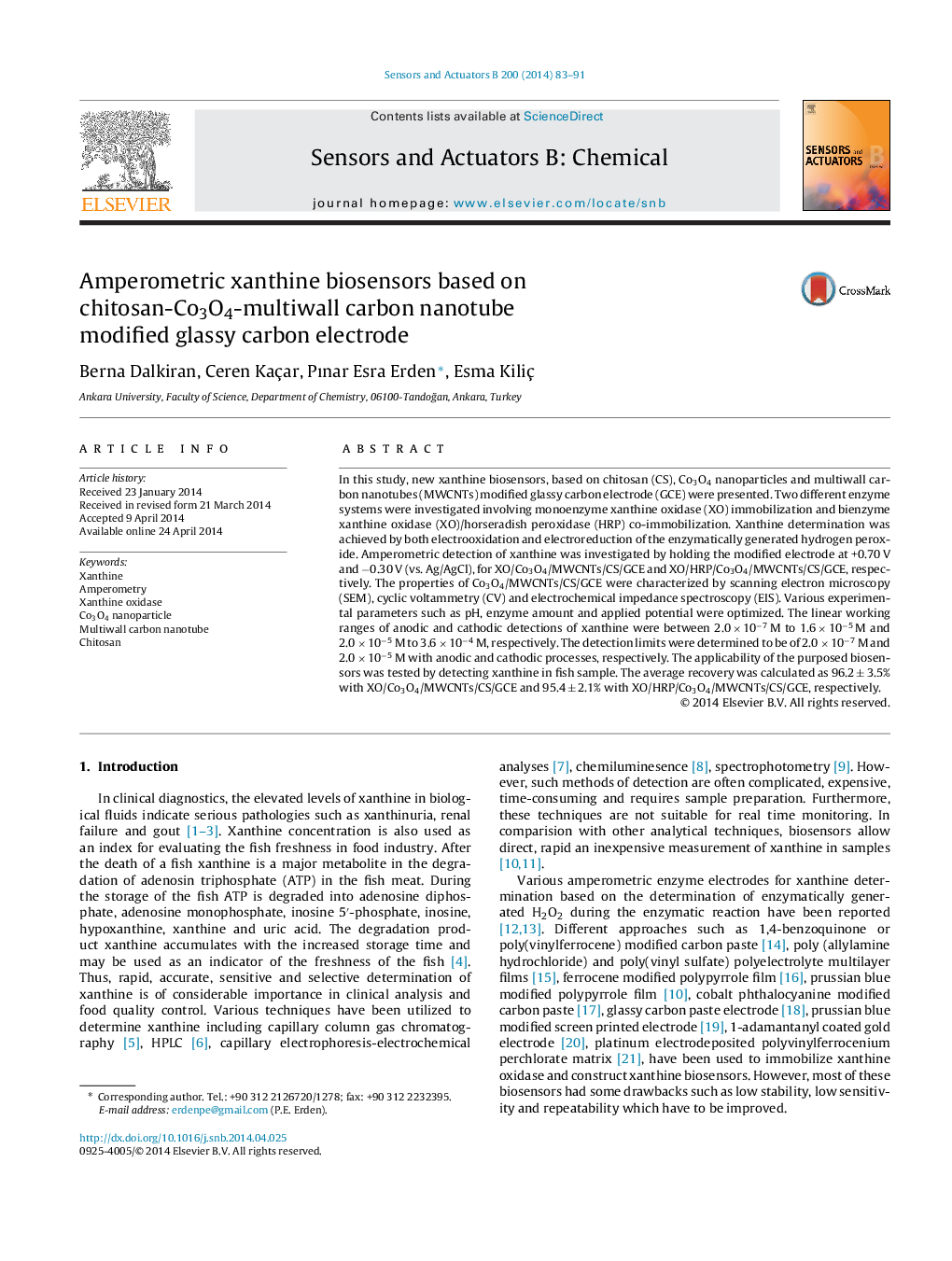| کد مقاله | کد نشریه | سال انتشار | مقاله انگلیسی | نسخه تمام متن |
|---|---|---|---|---|
| 739971 | 1462090 | 2014 | 9 صفحه PDF | دانلود رایگان |

• Xanthine biosensors were constructed by combining the advantageous properties of MWCNTs and Co3O4.
• Incorporating Co3O4 nanoparticles into MWCNTs/CS film increased the electron transfer.
• HRP and XO were co-immobilized for the reductive amperometric detection of xanthine.
• XO/HRP/Co3O4/MWCNTs/CS/GCE showed strong anti-interference ability.
• Xanthine in fish meat was succesfully determined using presented biosensors.
In this study, new xanthine biosensors, based on chitosan (CS), Co3O4 nanoparticles and multiwall carbon nanotubes (MWCNTs) modified glassy carbon electrode (GCE) were presented. Two different enzyme systems were investigated involving monoenzyme xanthine oxidase (XO) immobilization and bienzyme xanthine oxidase (XO)/horseradish peroxidase (HRP) co-immobilization. Xanthine determination was achieved by both electrooxidation and electroreduction of the enzymatically generated hydrogen peroxide. Amperometric detection of xanthine was investigated by holding the modified electrode at +0.70 V and −0.30 V (vs. Ag/AgCl), for XO/Co3O4/MWCNTs/CS/GCE and XO/HRP/Co3O4/MWCNTs/CS/GCE, respectively. The properties of Co3O4/MWCNTs/CS/GCE were characterized by scanning electron microscopy (SEM), cyclic voltammetry (CV) and electrochemical impedance spectroscopy (EIS). Various experimental parameters such as pH, enzyme amount and applied potential were optimized. The linear working ranges of anodic and cathodic detections of xanthine were between 2.0 × 10−7 M to 1.6 × 10−5 M and 2.0 × 10−5 M to 3.6 × 10−4 M, respectively. The detection limits were determined to be of 2.0 × 10−7 M and 2.0 × 10−5 M with anodic and cathodic processes, respectively. The applicability of the purposed biosensors was tested by detecting xanthine in fish sample. The average recovery was calculated as 96.2 ± 3.5% with XO/Co3O4/MWCNTs/CS/GCE and 95.4 ± 2.1% with XO/HRP/Co3O4/MWCNTs/CS/GCE, respectively.
Journal: Sensors and Actuators B: Chemical - Volume 200, September 2014, Pages 83–91